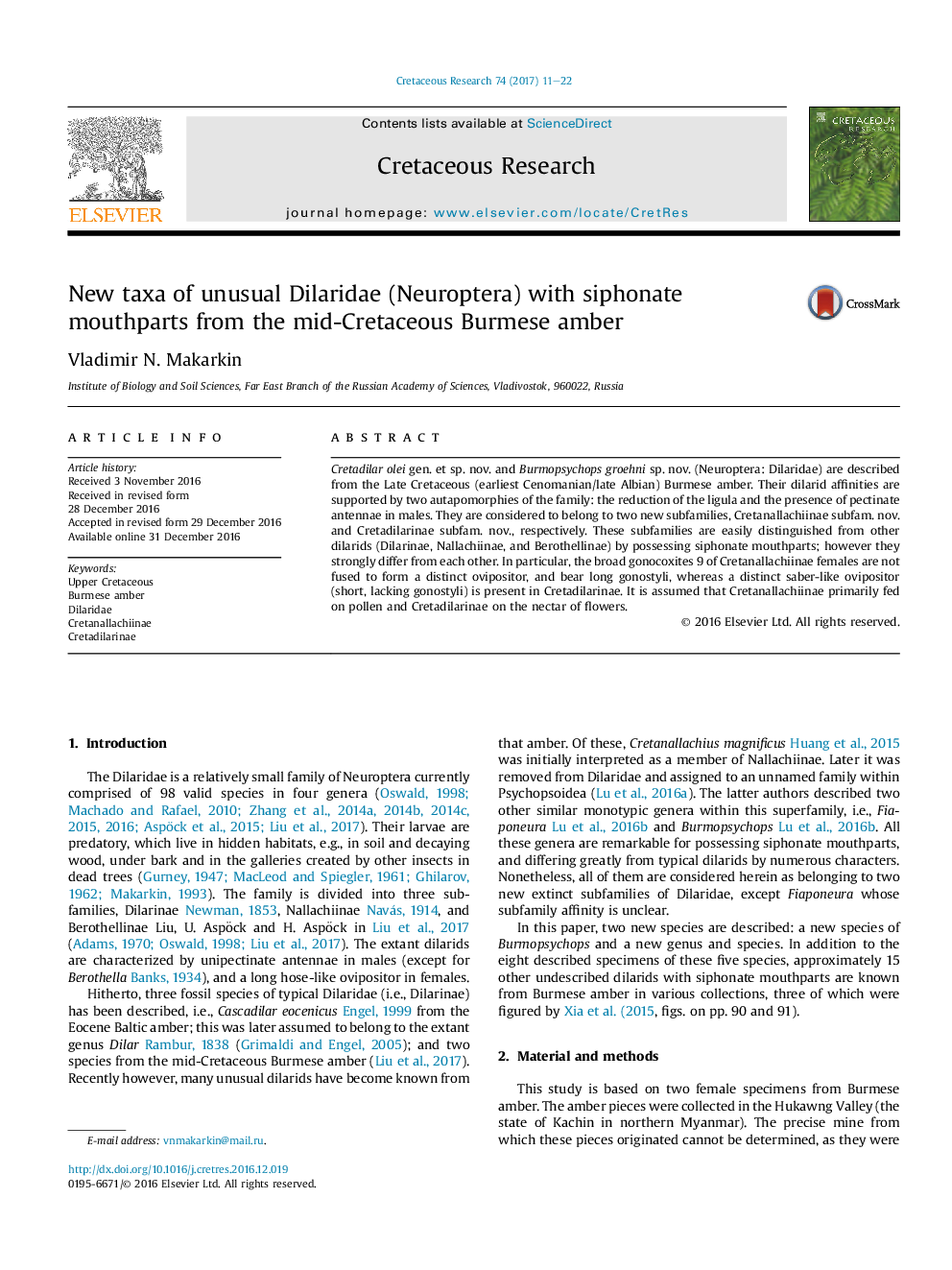| Article ID | Journal | Published Year | Pages | File Type |
|---|---|---|---|---|
| 5788019 | Cretaceous Research | 2017 | 12 Pages |
Cretadilar olei gen. et sp. nov. and Burmopsychops groehni sp. nov. (Neuroptera: Dilaridae) are described from the Late Cretaceous (earliest Cenomanian/late Albian) Burmese amber. Their dilarid affinities are supported by two autapomorphies of the family: the reduction of the ligula and the presence of pectinate antennae in males. They are considered to belong to two new subfamilies, Cretanallachiinae subfam. nov. and Cretadilarinae subfam. nov., respectively. These subfamilies are easily distinguished from other dilarids (Dilarinae, Nallachiinae, and Berothellinae) by possessing siphonate mouthparts; however they strongly differ from each other. In particular, the broad gonocoxites 9 of Cretanallachiinae females are not fused to form a distinct ovipositor, and bear long gonostyli, whereas a distinct saber-like ovipositor (short, lacking gonostyli) is present in Cretadilarinae. It is assumed that Cretanallachiinae primarily fed on pollen and Cretadilarinae on the nectar of flowers.
